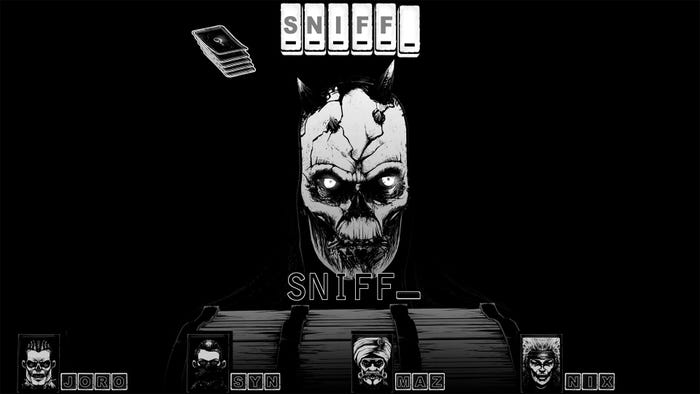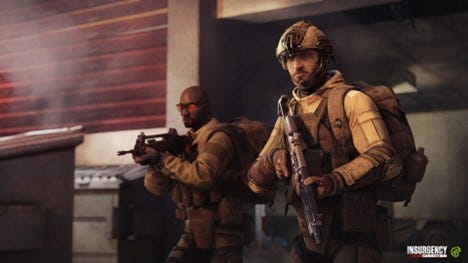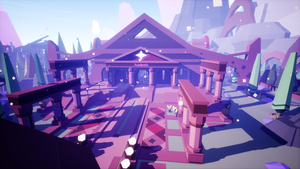Tips from Top Studios on how to Optimize Production
Core production practices depend on strong leadership and project management. Here is what a few of the games studios I've spoken to recently tell me works for them, including the ways in which they use the Agile methodology.

Creating a game that captures the attention of its users is just as much about imagination as it is about execution. There is no guarantee that the original spark of an idea will transform into compelling, revenue-generating gameplay. People who are skilled and passionate about the art of producing games will make all the difference to any game project, large or small.
One key skill here is to know the core production practices, from project management to leadership. It becomes very difficult — even impossible — to remain competitive in this fast-moving industry without using the most suitable practices for the tasks at hand. The challenge is made even harder in projects introducing new technologies, where the unknowns are plentiful. The sheer scale of code and other assets involved in the development process, and teams that are often large or dispersed, are other aspects of complexity in game production that should not be under-valued. There have been enough projects where scope, resources, and schedules have been fixed (the ‘iron triangle’) with horrible results to make most studio heads today understand that alternative approaches are required to succeed.
Fortunately, there are some studios excelling at this that we can look to for inspiration. I recently spoke with producers and studio heads at Avalanche Studios, EA, Frontier Developments, inVRsion and No Brakes Games, and asked them to share their secrets to succeed when in production. This group represents very different types of successful game projects, and they shared how they keep the highest quality while being as Agile as their context requires.
Never Sacrifice Quality
Frontier Developments is the legendary studio based in the Cambridge Science Park in the UK, famous for the Elite franchise. Gerard Huke, Head of Production, has seen the company’s transformation to a team of over 500 people over the last two decades. At Frontier Developments, there is no one rule for everything, except that the game quality needs to come first. Pipelines and workflows need to focus on how a team can meet that demand. So instead of locking into a particular framework — for instance, Kanban, Scrum or Waterfall — the studio blends elements from different methods. Those are then applied to each game development project, based on its needs.
The studio has also developed its own way to organize ideas into various features and epics on a board — an approach that is helping the team find the fun in each title. Each completed board gives the team a clear overview of the game early in the process. It also provides the chance to communicate changes, define which features will make the final cut, and create a foundation for the product backlog.
Avalanche Studios is a growing AAA game development firm, with studios in Malmö, Stockholm, and New York, developing titles such as the Just Cause series and Mad Max. Avalanche Studios delivers multiple large-scale game projects at the same time, both self-published as well as working together with publishers. Avalanche’s Johan TengÃ¥ produces an exciting project together with a publisher with several studios involved. It is a massive undertaking that puts pressure on timelines, efficiency, and quality. Teams primarily use Agile to plan their work, but have added their own customized flavor. They are not afraid to experiment to achieve quality and speed. For instance, they introduced an Experience Owner role with the goal to advocate for the game experience throughout development to ensure that the game’s vision is broken down into appropriate backlog items. Experience owners work very closely with directors, who are in charge of managing the portfolio of different experiences.
The same approach is not used for every project. Producers run their own teams, using more hybrid methods of Agile, Kanban, and Waterfall. Regardless of the approach, the goal stays the same: get the job done in the most efficient way, while adhering to a high standard of quality.
Avoid “Agile by the Books”
Milan-based inVRsion specializes in enterprise virtual reality solutions for the retail market. Specialized customer projects are the biggest difference compared to building traditional games, with a typical project lasting not more than two months, and as little as a two-week sprint based on their platform. Michele Antolini, inVRsion’s CTO, uses his technical experience and game development experience from the studio Milestone to structure project deliverables, combining version control and project management tools with best practice of how a game should be built. Historically working in a fairly Waterfall way, inVRsion is now Agile-based. However, this is not an all-or-nothing Agile approach. Michele says that “Agile by the books” probably would not work in a multi-project, multi-team setup, in any industry.
Most of the inVRsion development team works in full Agile, anticipating customers’ needs and creating user stories in the backlog, with those stories then committed to sprints. The 3D artists work differently given the nature of their work, involving small and repetitive tasks. So, there a more Waterfall-like approach is used, though it maintains an Agile flavour by planning in sprints.
Focus on Vision and Work Life Balance
Electronic Arts (EA) shared their experience, too. Producer JP Kellams in the Madden team told me that the team works with some uncertainty, because the studio makes decisions just-in-time. To handle this, backlog management and quality are prioritized, helping the team manage changes that inevitably happen during a game’s development. This helps them work with — not against — the project’s natural flow. At the start of each project, it is important to define a clear, concise vision, and for teams to then iterate towards that vision. A focus for JP Kellams is work-life balance. It is a big topic in the industry, and care for the people working to make the game is something every producer should have top of mind. This includes getting the team to accept that they do not have to know everything from the start, and that adaptations will be made in the details while still focusing on the vision.
Indie studio No Brakes Games had a big success with the title Human: Fall Flat. Head of studio Sitara Shefta is convinced that happy teams make better games. Talent is recruited to their studio in Tenerife to be both highly skilled in one area, but also able to contribute to another. This cross-functionality is a factor in No Brakes Games’ success, cultivating growth and diversity for employees.
With the ability to be highly Agile, No Brakes Games sets weekly or biweekly sprint-like iterations for content updates, allowing them to prototype and explore what will be fun. In this mode, they may need to change direction quickly and adjust their goals, and team processes are adapted to change direction fast. This way of working avoids adding more pressure to deliver locked-down scope on a certain date, plus keeps the team happy and helps them align with the company’s values.
The experiences of these knowledgeable people show that high quality project management is important in game development, and when executed well, makes a substantial contribution to a game’s ultimate success.
Read more about:
BlogsAbout the Author(s)
You May Also Like













